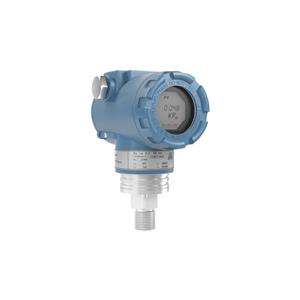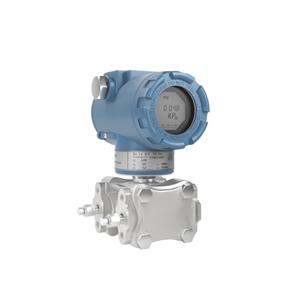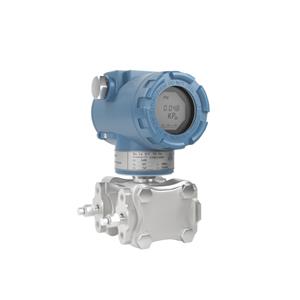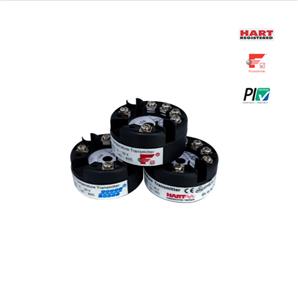-
1108-2022
The role of temperature in transmitters
The role of temperature in the transmitter For the temperature range of the temperature transmitter, usually a transmitter will calibrate two temperature ranges, that is, the normal operating temperature range and the temperature compensable range. The normal operating temperature range refers to the temperature range when the transmitter is not damaged under working conditions. When the temperature compensation range is exceeded, the performance index of its application may not be achieved. The temperature compensation range is a smaller range than the operating temperature range. typical range. Working within this range, the transmitter will definitely achieve its due performance.
-
0508-2022
How to solve problems encountered in the use of intelligent temperature transmitter
How to solve problems encountered in the use of intelligent temperature transmitter
-
0707-2022
NCS-TT106 FF Protocol Temperature Transmitter (Head Mounted)
NCS-TT106 FF Protocol Temperature Transmitter (Head Mounted),NCS-TT106 series temperature transmitter is a fieldbus temperature transmitter developed by Microcyber Company.
-
0706-2022
Calibration method of measurement error of intelligent temperature transmitter
Calibration method of measurement error of intelligent temperature transmitter
-
1308-2025
Microcyber Attended 2025 MICONEX
Microcyber's main products and services include industrial communication chips, communication cards, smart meters, instrument operating systems, IC equipment control software, industrial Internet platforms and industrial apps, and intelligent engineering project implementation. These products have been deployed in over 400 major engineering projects, covering industries such as power generation, petroleum, chemicals, cement, metallurgy, petrochemicals, biopharmaceuticals, water treatment, and furnaces. Products are exported to over 40 countries, including the United States, Europe, Japan, and South Korea.
-
1402-2025
When using a temperature sensing transmitter, there are several things to keep in mind
Measuring range fit: according to the actual application of the temperature range to be measured in the application of the scene to choose the appropriate measuring range of the temperature sensing transmitter, to ensure that it can cover and accurately measure the target temperature, to avoid over-range measurements lead to equipment damage or inaccurate measurement of the situation.
-
1002-2025
Working environment range of platinum RTD temperature transmitter
Platinum RTD temperature transmitter is a commonly used temperature measuring instrument, widely used in industry, scientific research, medical and other fields. It has the advantages of high measurement accuracy, good stability and strong anti-interference ability.
-
1601-2025
How do you calibrate a temperature transmitter
Temperature transmitters play a crucial role in industrial processes, ensuring accurate temperature measurements and control. Proper calibration of these devices is essential for maintaining precision and reliability in various applications. In this comprehensive guide, we'll explore the process of calibrating a temperature transmitter, with a focus on the advanced NCS-TT108 Temperature Transmitter.
-
1601-2025
Microcyber MS0210 Temperature Board Obtained the Explosion-proof Certification
On November 6, 2024, the MS0210 temperature board independently developed by Microcyber obtained the explosion-proof certification.
-
2712-2024
Advanced Features of Modern Temperature Transmitters
1. Multi-Protocol Support: The NCS-TT105 supports the latest versions of Foundation Fieldbus H1, PROFIBUS PA, and HART protocols. This versatility allows it to integrate seamlessly with a wide range of control systems and industrial networks. 2. Dual-Channel Input: With support for dual-channel sensor input, the NCS-TT105 enables redundancy and hot backup configurations. This feature enhances reliability and ensures continuous operation in critical applications. 3. Flexible Sensor Compatibility: The transmitter accommodates various sensor types, including 2-wire, 3-wire, and 4-wire RTDs. This flexibility makes it suitable for a broad range of temperature measurement scenarios. 4. High Precision: Boasting accuracy better than grade 0.1 and low temperature drift (better than ± 50ppm/℃), the NCS-TT105 delivers exceptional measurement precision. The enhanced version offers an impressive accuracy of ±0.1℃ for Pt100 and Pt1000 sensors. 5. Diagnostic Capabilities: Advanced temperature transmitters often include self-diagnostic features that can detect sensor failures, wiring issues, or internal malfunctions. This proactive approach to maintenance helps prevent unexpected downtime. 6. Remote Configuration: Digital communication protocols allow for remote configuration and calibration of the transmitter. This feature significantly reduces the need for on-site visits and simplifies maintenance procedures. 7. Customizable Measurement Ranges: Users can configure the transmitter's measurement range to match their specific application requirements, optimizing resolution and accuracy for the intended temperature span.




